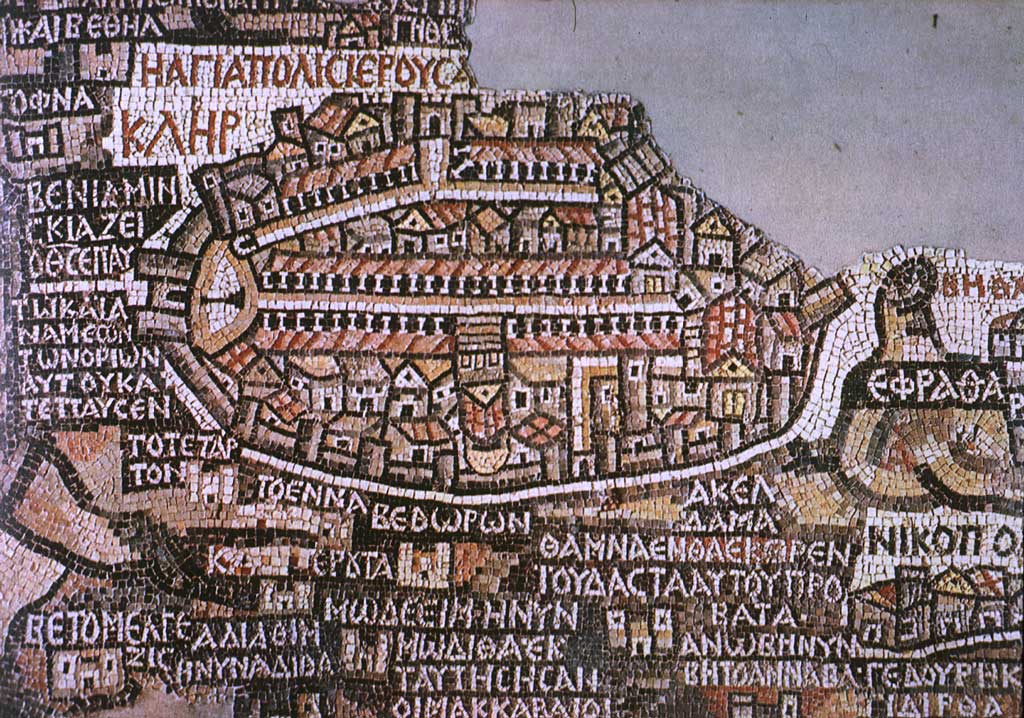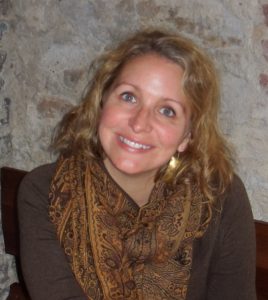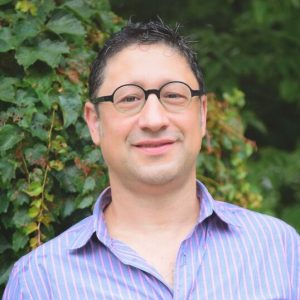

2/22 LECTURE | Jerusalem in Rome and Galilee: Encountering the Holy City in Jewish and Christian Mosaics
Thursday, February 22, 7:00 pm PST - 8:30 pm PST
The city of Jerusalem has long been of vital importance to numerous religious groups, from antiquity to the present. But where did rank-and-file believers in the ancient world actually encounter images of the “Holy City” in their daily lives? And what cultural and social work did these images perform?
Join Professors Karen Britt and Ra‘anan Boustan as they explore a wide range of depictions of Jerusalem in floor and wall mosaics produced during late antiquity (third to eighth centuries CE). During this period, which saw the emergence of both orthodox Christianity and novel forms of Judaism, visual representations of Jerusalem became increasingly prominent in the decoration of religious buildings throughout the Mediterranean, from the grand basilicas of Rome in the west to rural synagogues and churches in Palestine and Arabia in the east. They will show how images of Jerusalem bridged the great gaps in both space and time that separated the religious communities of late antiquity from Jerusalem and its glorious past. In the process, these images brought the visual presence of the Holy City into spaces of worship throughout the Roman Empire, thereby fostering memories of the past, hopes for the future, and forging networks of belonging that radiated out from this sacred center into the cities, towns, and even villages of the late Roman world.
This lecture is co-sponsored by the Middle East Center in the Jackson School of International Studies, the School of Art + Art History + Design, the Department of Middle Eastern Languages and Cultures, and the Department of Classics at the University of Washington.
This event is free and open to the public, however RSVP is required. Click the button below to register:
About the speakers
 Karen Britt is assistant professor of art history at Northwest Missouri State University. As an art historian engaged in archaeology, her research focuses on the eastern Mediterranean. She has worked on archaeological projects at various sites in the region, and is currently the mosaics specialist for the Huqoq Excavation Project in Israel. In her scholarship, Britt explores how architectural decoration, in particular mosaics, can illuminate culture and society in the late Roman, Byzantine, and early Islamic worlds. Her research has been supported by the National Endowment for the Humanities, the U.S. Department of State’s division of Educational and Cultural Affairs, the J. William Fulbright Foundation, the Samuel H. Kress Foundation, and the Council of American Overseas Research Centers. She is the co-author of The Elephant Mosaic Panel in the Synagogue at Huqoq (2017) and has authored or co-authored articles published in venues including Studies in Late Antiquity, Journal of Late Antiquity, Bulletin of the American Schools of Oriental Research, Mediterranean Studies, Journal of Art Historiography, and Journal of Roman Archaeology. Britt has collaborated with Ra‘anan Boustan since 2014 on the publication of the synagogue mosaics in the village of Huqoq in lower eastern Galilee.
Karen Britt is assistant professor of art history at Northwest Missouri State University. As an art historian engaged in archaeology, her research focuses on the eastern Mediterranean. She has worked on archaeological projects at various sites in the region, and is currently the mosaics specialist for the Huqoq Excavation Project in Israel. In her scholarship, Britt explores how architectural decoration, in particular mosaics, can illuminate culture and society in the late Roman, Byzantine, and early Islamic worlds. Her research has been supported by the National Endowment for the Humanities, the U.S. Department of State’s division of Educational and Cultural Affairs, the J. William Fulbright Foundation, the Samuel H. Kress Foundation, and the Council of American Overseas Research Centers. She is the co-author of The Elephant Mosaic Panel in the Synagogue at Huqoq (2017) and has authored or co-authored articles published in venues including Studies in Late Antiquity, Journal of Late Antiquity, Bulletin of the American Schools of Oriental Research, Mediterranean Studies, Journal of Art Historiography, and Journal of Roman Archaeology. Britt has collaborated with Ra‘anan Boustan since 2014 on the publication of the synagogue mosaics in the village of Huqoq in lower eastern Galilee.
 Ra‘anan Boustan has been a Research Scholar in the Program in Judaic Studies at Princeton University since 2017. Before coming to Princeton, he was an Associate Professor in the Department of History at UCLA. Boustan’s work explores the dynamic intersections between Judaism and other Mediterranean religious traditions in late antiquity, with a special focus on the impact of Christianization on Jewish culture and society. In addition to publishing numerous articles and edited volumes, Boustan is the author of From Martyr to Mystic (2005) and co-author of The Elephant Mosaic Panel in the Synagogue at Huqoq (2017). He currently serves as the Editor-in-Chief of two international journals, Jewish Studies Quarterly and Studies in Late Antiquity. Boustan is the site historian for the Huqoq Excavation Project and collaborates with Dr. Karen Britt on the publication of the mosaic floor in the site’s late fourth-century synagogue.
Ra‘anan Boustan has been a Research Scholar in the Program in Judaic Studies at Princeton University since 2017. Before coming to Princeton, he was an Associate Professor in the Department of History at UCLA. Boustan’s work explores the dynamic intersections between Judaism and other Mediterranean religious traditions in late antiquity, with a special focus on the impact of Christianization on Jewish culture and society. In addition to publishing numerous articles and edited volumes, Boustan is the author of From Martyr to Mystic (2005) and co-author of The Elephant Mosaic Panel in the Synagogue at Huqoq (2017). He currently serves as the Editor-in-Chief of two international journals, Jewish Studies Quarterly and Studies in Late Antiquity. Boustan is the site historian for the Huqoq Excavation Project and collaborates with Dr. Karen Britt on the publication of the mosaic floor in the site’s late fourth-century synagogue.
Britt’s and Boustan’s collaboration represents a close partnership between a specialist in late antique material culture who has worked on mosaics at archaeological sites in the eastern Mediterranean and a historian of religion with expertise in literary evidence, especially the Jewish textual tradition from the Hellenistic, Roman, and Byzantine periods. They endeavor not only to bring their respective tools and expertise to bear on their work on mosaics, but more importantly to develop as much as possible a fully integrated approach that avoids privileging one type of historical source.
The University of Washington is committed to providing access and accommodation in its services, programs, and activities. To make a request connected to a disability or health condition contact Grace Elizabeth Dy at (206) 543-0138 or jewishst@uw.edu at least 10 days before the event.
